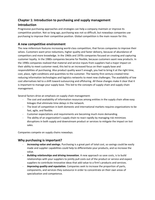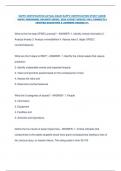Summary
Summary Sourcing and Supply Chain Management - Handfield, Monczka, Giunipero & Patterson - Tactical Buying - University of Twente - International Business Administration - SUM module
- Course
- Institution
- Book
Summary of the book Sourcing and Supply Chain Managment and 4 selected articles. The book was written by Handfield, Monczka, Giunipero, Patterson & Waters. The summary consists of the following book chapters: 1, 7, 8 , 10, 11, 12, 13, 16, 19. Also, the following four articles are summarized: -Ho...
[Show more]













